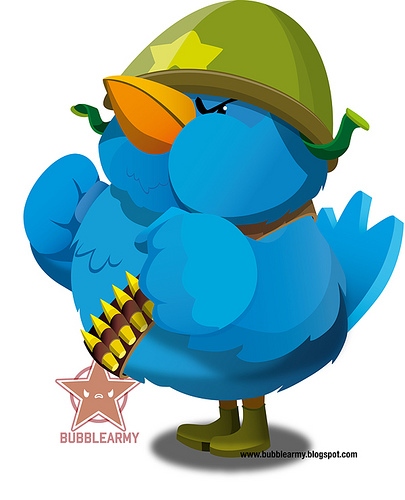 About a week ago, a member of our school’s professional development committee announced that, as a means of furthering conversation between our school-based pro-d days, she would be making a habit of sending (via email) a series of weekly “energizers,” or prompts to further our staff’s thinking.
About a week ago, a member of our school’s professional development committee announced that, as a means of furthering conversation between our school-based pro-d days, she would be making a habit of sending (via email) a series of weekly “energizers,” or prompts to further our staff’s thinking.
Immediately, this struck me as an opportunity to introduce social media into the fabric of our staff’s dialogue (beyond our English department’s Twitter enclave: @CindyQuach @rsfindley @lidube @kecoopr, as well as our principal @djmath), and help a colleague eager to inspire and engage in dialogue do so with a much more efficient means than email. Long envious of Karl Fische and Arapahoe High School‘s Fischbowl Staff Development Blog, hopefully our efforts at Gleneagle will become a blogging community of its own. But until then, I am setting my sights on spreading the word about Twitter as a means of furthering our discussions.
Hopefully, sometime this week I will be able to stage an introductory Tweetup for her – something along the lines of the ongoing introduction TeachPaperless offered a colleague new to social media last spring. But in the meantime, I have sent her the following Startup Instructions, and thought I would share them here (further points will no doubt reference my post, Building a Personal Learning Network):
There is a vibrant, global conversation of education on a 24 cycle if one wishes to engage that fully (and there are those that do). But, with the right kind of use, I think you will find an efficient, unobtrusive manner in which to continue the school, the pro-d committee, and your own dialogue and learning. I can hopefully provide some of the startup help you need to get going. We’ll start small… the great thing about this individualized pro-d is that you can take it on in doses large or small. Set aside as little as a half an hour a week to check in with your Twitter feed – once it is set up (see below) – and I don’t doubt that you’ll find yourself increasingly engaged. First things first: sign up for an account on Twitter. Before you will want to venture into running a whole blog – if that’s where you wind up going with it – Twitter is a great way to test drive a public publishing channel with microblogging. Here are some resources to help get you started:
Once you have a base of people whom you are following, I would recommend downloading a Twitter client, like Tweetdeck to organize them into streams (think: Teachers, Writers, Current Events, etc). Also, utilize Twitter Seaches of topics like #education, or #edchat (which has now become a 24hr a day conversation of teachers from everywhere, but began – and remains – as a weekly conversation on a designated educational topic decided by a polling of participants: follow the conversation at 4pm Pacific time every Tuesday) to further the reach of your listening, and contributions to The Conversation. That should be an ample challenge for the extra three hours (really though, this could all take half an hour) you hopefully find this week! Let me know if I can be of any other assistance in the meantime. I’m happy to share any help that I can!
Is there anything you would recommend adding at this point? There are no doubt better Twitter lists of educators to start with since I began with the service (and compiled most of the resources I shared above). Help us build our school’s social media infrastructure with some of your favourites via the comments!
I hope that introductory Tweetup goes well for you! People really don’t understand what they’re missing when they aren’t part of Twitter. It’s a fantastic pro-d tool.
One thing I would caution people about is to give it time. It takes a while to ‘get’ it, or it did for me anyway. I think sharing that with people, so their expectations are realistic, might be a good idea.
That’s definitely true in my experience as well, Errin. I think I had a Twitter account for almost six months before experiencing my Aha moment and realizing the power of public 140 character updates. Following people who utilize Twitter productively – in either professional, academic, or social streams – are a good way to learn the ropes, I think, even if much of this learning curve is enjoyed through ‘lurking,’ or merely listening to the conversation going on.
Something I hear from many teachers is “I don’t have anything to say \ share \ contribute,” which I think is somewhat disheartening. Some of this is a matter of digital immigrants feeling leery of cultivating a public net presence. But I think once this is barrier is surmounted, the learning and dialogue can really build in momentum.